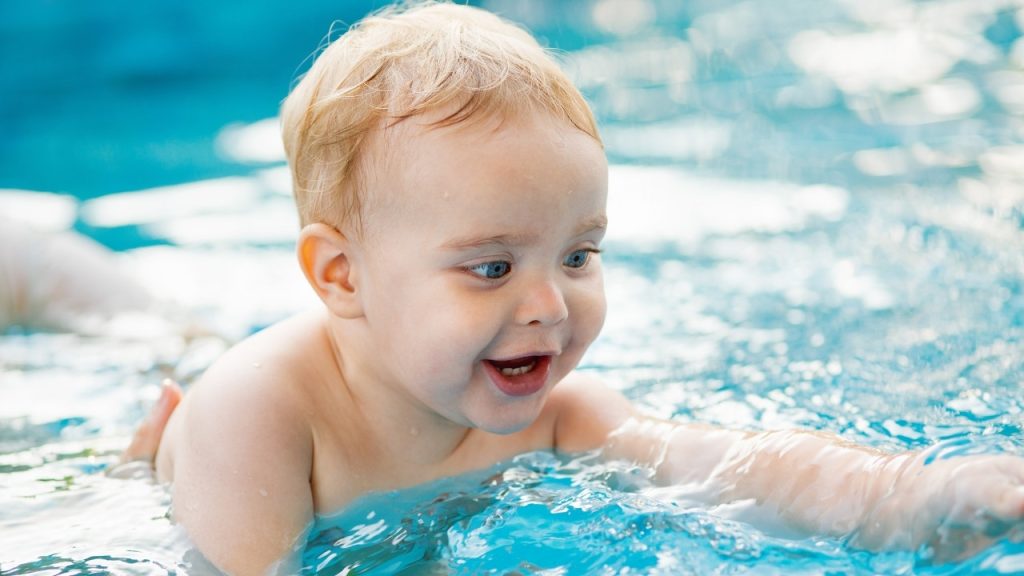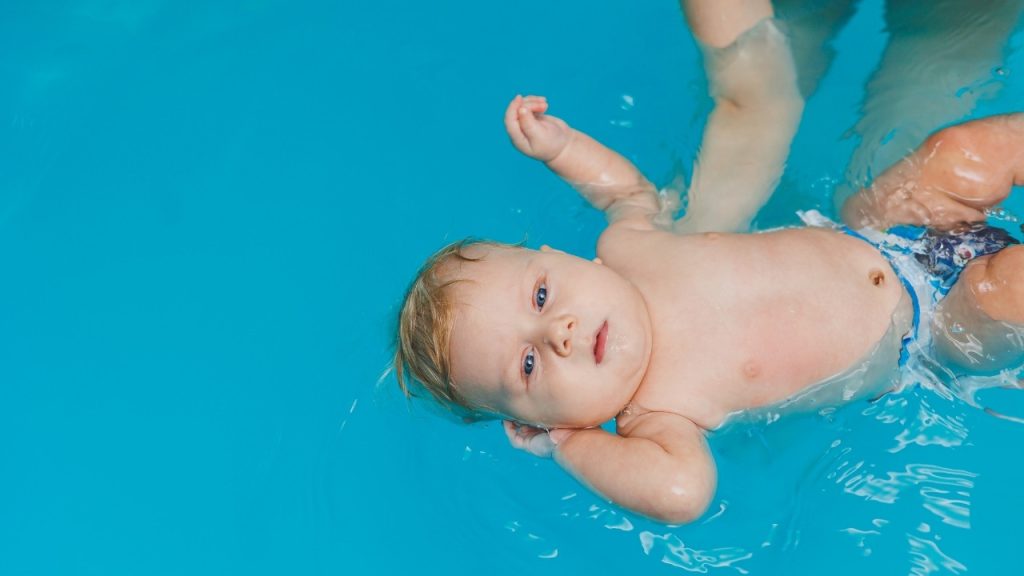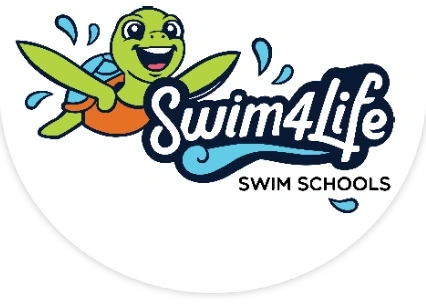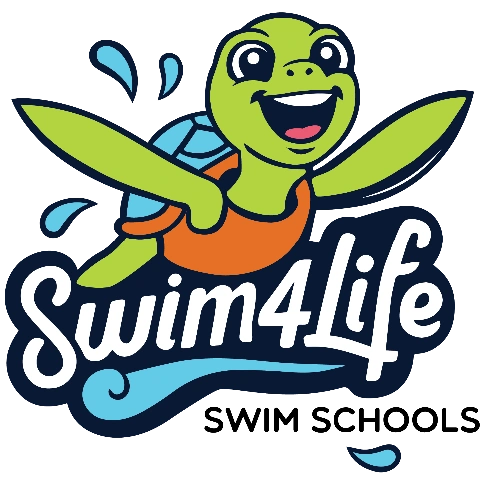Teaching your baby how to float on water is among the first water safety skills you can equip them with. Floating provides more than safety and fun. It builds confidence, promotes relaxation, and strengthens parent-child bonding. However, many parents worry about baby swimming safety, fearing their children might choke, cry, or resist.
With the right approach, floating can become a positive and enjoyable experience. Therefore, in this guide, we provide you with tips on how to teach baby to float on water to help your little one feel secure and prepared for future swimming skills.
At what Age Can Babies Learn to Float?
Parents often ask us, “When can babies learn to float?” Gentle baby floating techniques can begin as early as 3-6 months, always with full parental support and supervision. At this stage, floating feels more like a playful introduction to water.
Between 12 and 18 months, babies begin to show independence and may attempt short floats with less assistance. However, it is important to note that every child develops floating readiness at their own pace. Therefore, always follow your baby’s pace, never forcing them into positions that might cause discomfort. Patient encouragement is also key to fostering baby water confidence.

Read more: When Can Babies Start Swimming Lessons?
Two Basic Floating Positions for Babies
When teaching toddler floating in water, there are two fundamental positions to focus on. Both are safe and effective techniques that lay the foundation for future swimming progress.
Back float
The baby back float is often the first floating skill to introduce. It is the easiest position for babies because it encourages relaxation and reduces effort. With gentle support under the head and shoulders, your baby can feel safe as they look upward and breathe comfortably.
The position builds trust between you and your child while promoting calmness. Over time, your little one begins to enjoy swimming and floating without much assistance. For parents, the back float technique is a wonderful way to combine baby swimming safety with soothing bonding moments.
Front float
The baby front float requires more guidance and confidence. You can support with front floating by holding them under the chest and arms, keeping the face above water at all times. This position helps them understand balance and movement in water, preparing them for future strokes.
While more challenging than the back float, the front float introduces coordination and builds baby water confidence. It also acts as an essential stepping stone for toddler swimming lessons that eventually lead to independence in the water.
Step-by-Step Guide to Teaching Baby Floating
Learning to teach baby to float on water requires patience, consistency, and gentle encouragement. Follow these simple steps to build safety, confidence, and enjoyment for you and your little one.
1. Create a calm and safe environment.
A safe, warm, and quiet pool with minimal distractions is vital for toddler swimming lessons. Calm surroundings reduce anxiety and encourage natural progress in classes. Always start with playful activities to make your child feel secure.
2. Gently introduce your baby to the water.
Before practising any baby floating techniques, let your baby experience the water by introducing them gradually. This step is key in developing water confidence, as it reassures them that water is a safe and playful space.
3. Support your baby’s body correctly.
Proper support is essential when teaching your baby how to float on water. For the back float, place one hand under the head and shoulders. For the baby front float, position your hands under the chest and arms. Correct support ensures buoyancy and builds comfort as your little one balances on water.

4. Encourage relaxation through play.
Floating is easier when babies feel relaxed and comfortable. Use toys, gentle splashes, or songs to make practice fun. Combining these baby swimming tips with light-hearted interaction transforms floating into an enjoyable experience.
5. Alternate between the back and front float.
To strengthen balance and adaptability, alternate the baby back float and front float. Switching positions helps babies get familiar with different floating techniques and makes the sessions dynamic. The method also prepares them for toddler floating in water and future swimming strokes.
6. Keep sessions short and positive.
Babies tend to tire quickly, and overexposure may reduce their enjoyment. Limiting each floating session to 5-10 minutes helps your child feel safe and motivated, especially in parent and baby swimming lessons. Ending every practice on a positive note also builds lifelong water confidence.
7. Celebrate progress and small successes.
Recognising even tiny achievements motivates babies to keep trying and builds positive associations with float. These celebrations remind the child that progress is the goal, not perfection.
Tips to Make Floating Fun & Safe
Introducing floating should always balance enjoyment with baby swimming safety. Here are practical baby swimming tips you should follow to help your child embrace back and front floating:
- Always keep your baby within arm’s reach.
- Use soft songs and gentle games to create a sense of comfort. You can bring a favourite toy to increase familiarity.
- Follow your baby’s or toddler’s learning pace. Don’t make them feel like you are forcing them.
- If your baby resists, pause and try again later.
- Practice at the same time of day to build a routine.
- End every session on a happy note to reinforce positive feelings
Confident Floating Begins at Swim4Life
At Swim4Life, we specialise in helping parents teach baby to float on water in a nurturing and supportive environment. Our gentle approach, combined with small class sizes, ensures every child receives personalised attention. Our experienced instructors also focus on natural progress without pressure, whether it is enhancing floats or baby water confidence. Join Swim4Life today to give your little one the best start in water safety, bonding, and swimming enjoyment.





